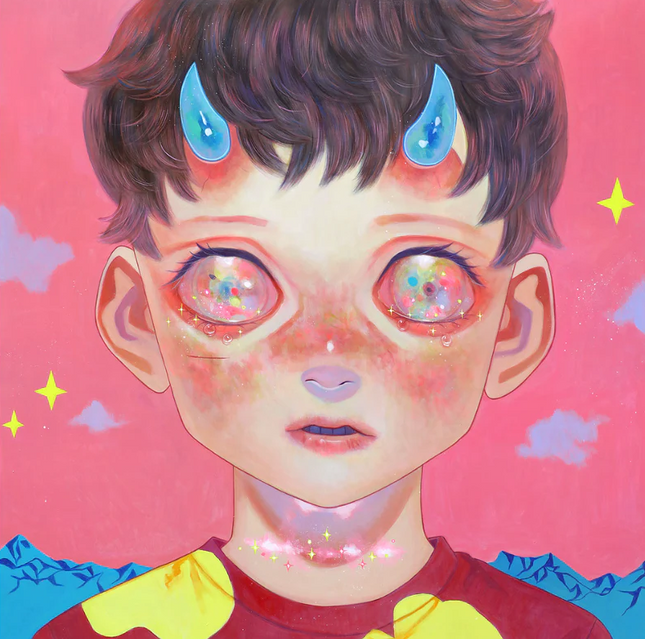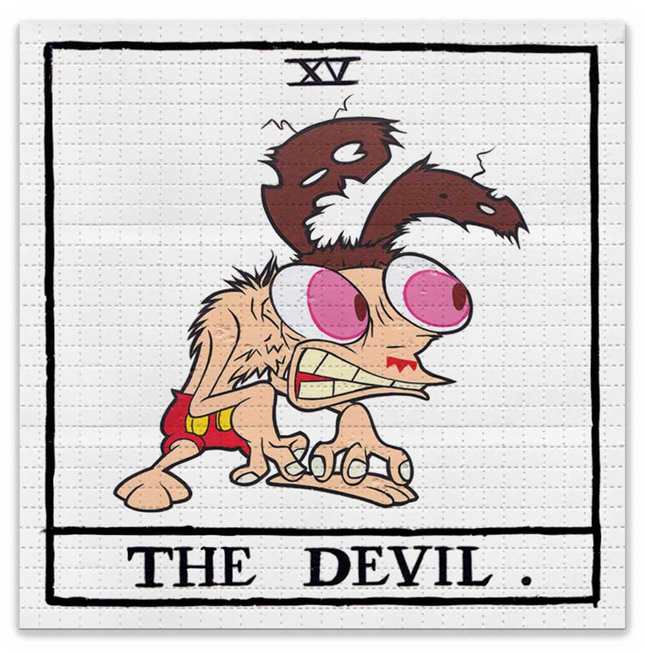
Devil Demons & Satan

Hikari Shimoda God Is Dead, But...#13 Archival Print by Hikari Shimoda
God Is Dead, But...#13 Archival Print by Hikari Shimoda Limited Edition on 290gsm Moab Entrada Fine Art Paper Pop Graffiti Street Artist Modern Artwork. 2023 Signed & Numbered Print Limited Edition of 50 Size 22x22 Archival Pigment Fine Art The Cultural Significance of Hikari Shimoda's "God Is Dead, But...#13" The visual narrative of Hikari Shimoda's "God Is Dead, But...#13" reflects a profound narrative through Street Pop Art and Graffiti Artwork. As a limited edition archival print on Moab Entrada fine art paper, this piece is a testament to Shimoda's prowess in melding pop culture aesthetics with a graffiti art ethos. The piece is part of a limited edition of 50, each signed and numbered by the artist, underscoring the exclusivity and collectibility of Shimoda's work. At 22x22 inches, the artwork commands attention with its size and the potency of its message. The Visual Language of "God Is Dead, But...#13" This artwork is a vibrant foray into the complex emotional and societal narratives Shimoda is renowned for. It features a childlike figure, a recurring motif in Shimoda's oeuvre, set against a backdrop that radiates a dreamlike yet unsettling energy. Large and filled with galaxies, the eyes suggest a universe of thought and feeling beyond the immediate visual impact. This symbolism is characteristic of Street Pop Art's intention to communicate deeper meanings beneath a visually accessible surface. The use of archival pigment in fine art print ensures that the depth of color and detail remains pristine, preserving the emotional intensity of the original work. Shimoda's Integration of Street Art Ideals in Modern Artwork In "God Is Dead, But...#13," Shimoda exemplifies how Street Pop Art can transcend the boundaries of traditional graffiti artwork to enter the realm of fine art. The piece is not just a representation of Shimoda's internal musings but also a cultural commentary that reflects the zeitgeist. The title itself, "God Is Dead," resonates with the philosophical musings of Friedrich Nietzsche, suggesting a society amid existential contemplation. This aligns with the ethos of street art, which often grapples with grand narratives of existence and identity within the urban landscape. The Emotional Resonance in Shimoda's Limited Edition Print The emotional resonance of this piece is palpable. The child's expression is ambiguous, caught between innocence and a knowing sadness that speaks to the loss of divine certainty implied by the title. The tears that seem to be galaxies suggest mourning this loss or perhaps crying out for a new form of divinity or hope within the void. The choice of fine art paper and the precision of the archival pigment technique adds a layer of durability to the transient nature of the subject, allowing the work to stand as a lasting icon of contemporary Street Pop Art and Graffiti Artwork. In crafting "God Is Dead, But...#13," Shimoda asserts her place in the modern art world, proving that Street Pop Art and Graffiti Artwork have a vital role in contemporary art discourse. Her limited edition print is not just a collector's item but a piece of cultural significance that encapsulates the spirit of our times.
$336.00

Skel I Got These Cheeseburgers Man Blotter Paper Archival Print by Skel
I Got These Cheeseburgers Man Blotter Paper Archival Print by Skel Limited Edition Fine Art Archival Pigment Print Art on Perforated Blotter Paper. 2023 Signed & Numbered Limited Edition of 40 Archival Pigment Print on Perforated Blotter Paper Size: 7.5 x 7.5 Inches Release: April 19, 2023 Ren & Stimpy Ren Devil Tarot Card Limited blotter editions are hand-perforated by Zane Kesey. Blotter paper artwork prints are a unique form of art that involves transferring ink onto specially treated blotter paper. The resulting prints are often abstract and colorful, and can be used for a variety of decorative and artistic purposes. To create a blotter paper artwork print, the artist first prepares the blotter paper by treating it with chemicals that will enhance its absorbency and ability to hold ink or dye. Then, ink or dye is applied to the paper using various techniques, such as dripping, pouring, or spraying. The paper is left to dry, and the resulting print is then carefully removed from the blotter paper. Archival printing techniques are used to produce high-quality prints of the original artwork. This involves using high-quality inks and paper that are designed to last for a long time without fading or deteriorating. Archival prints are also resistant to moisture and sunlight, which helps to preserve the artwork for years to come. Blotter paper artwork prints can be a great addition to any home or office decor, and they are often used as a unique form of wall art. They are also popular among collectors and art enthusiasts, as each print is one-of-a-kind and can never be replicated exactly.
$415.00



